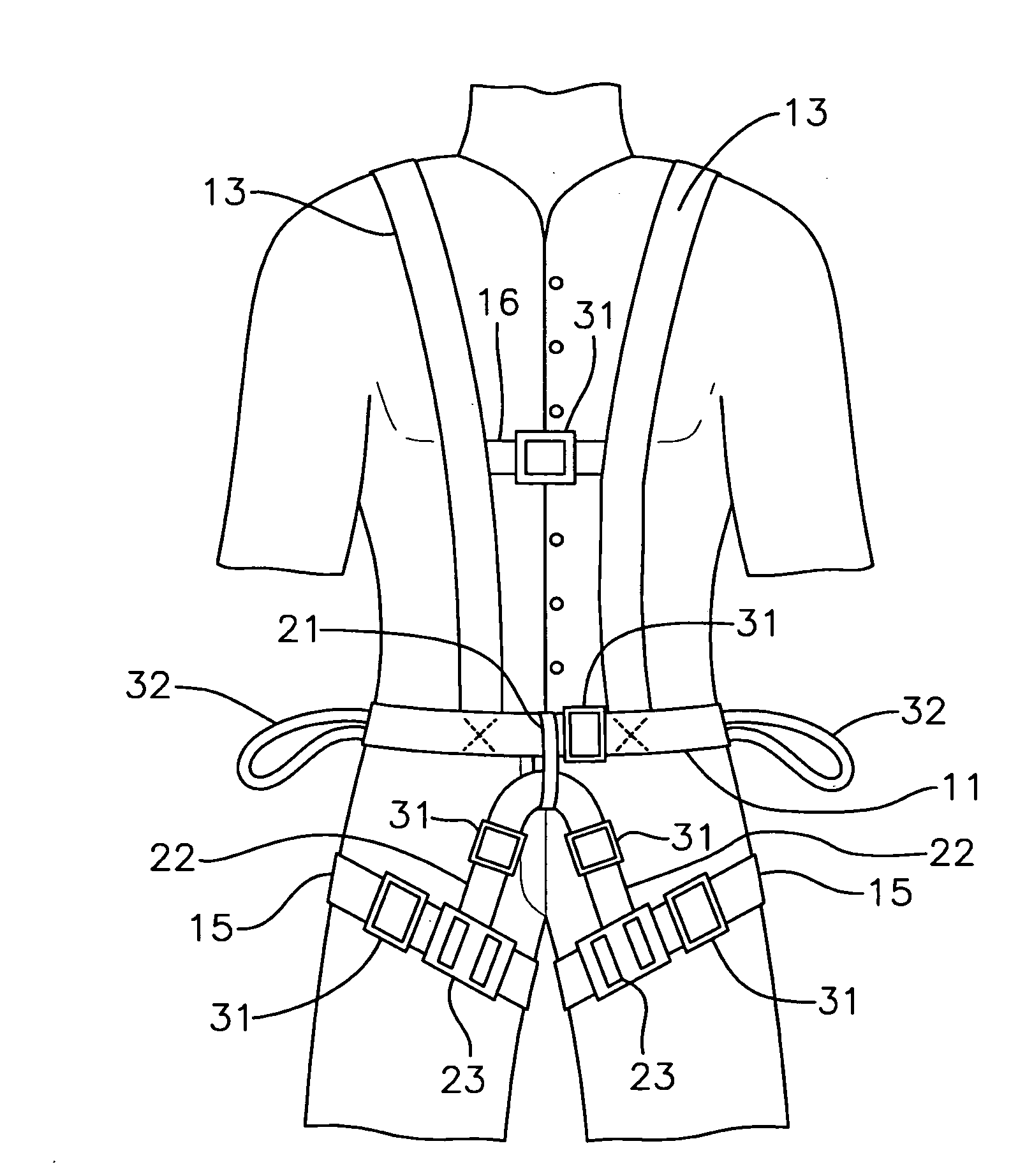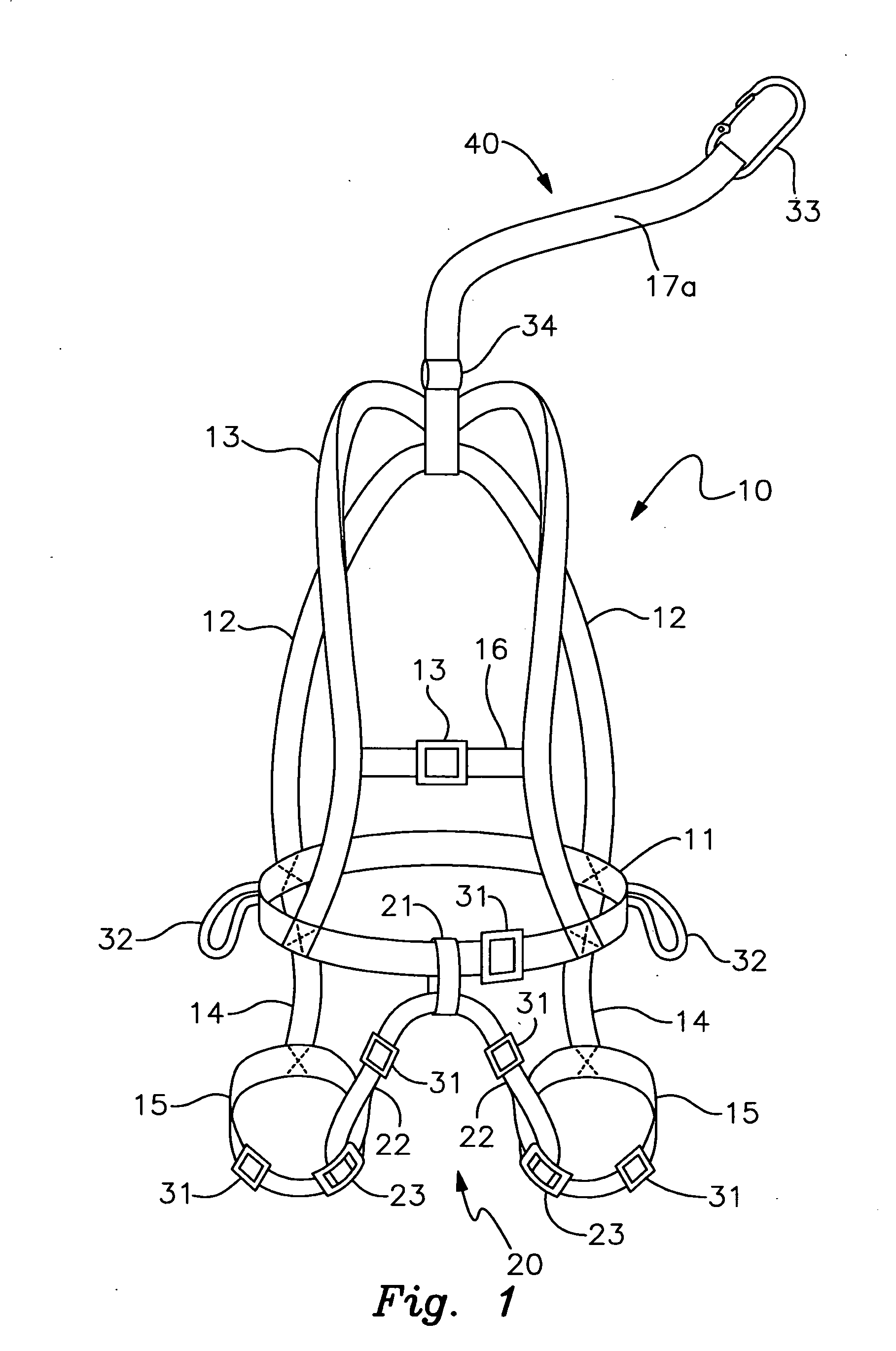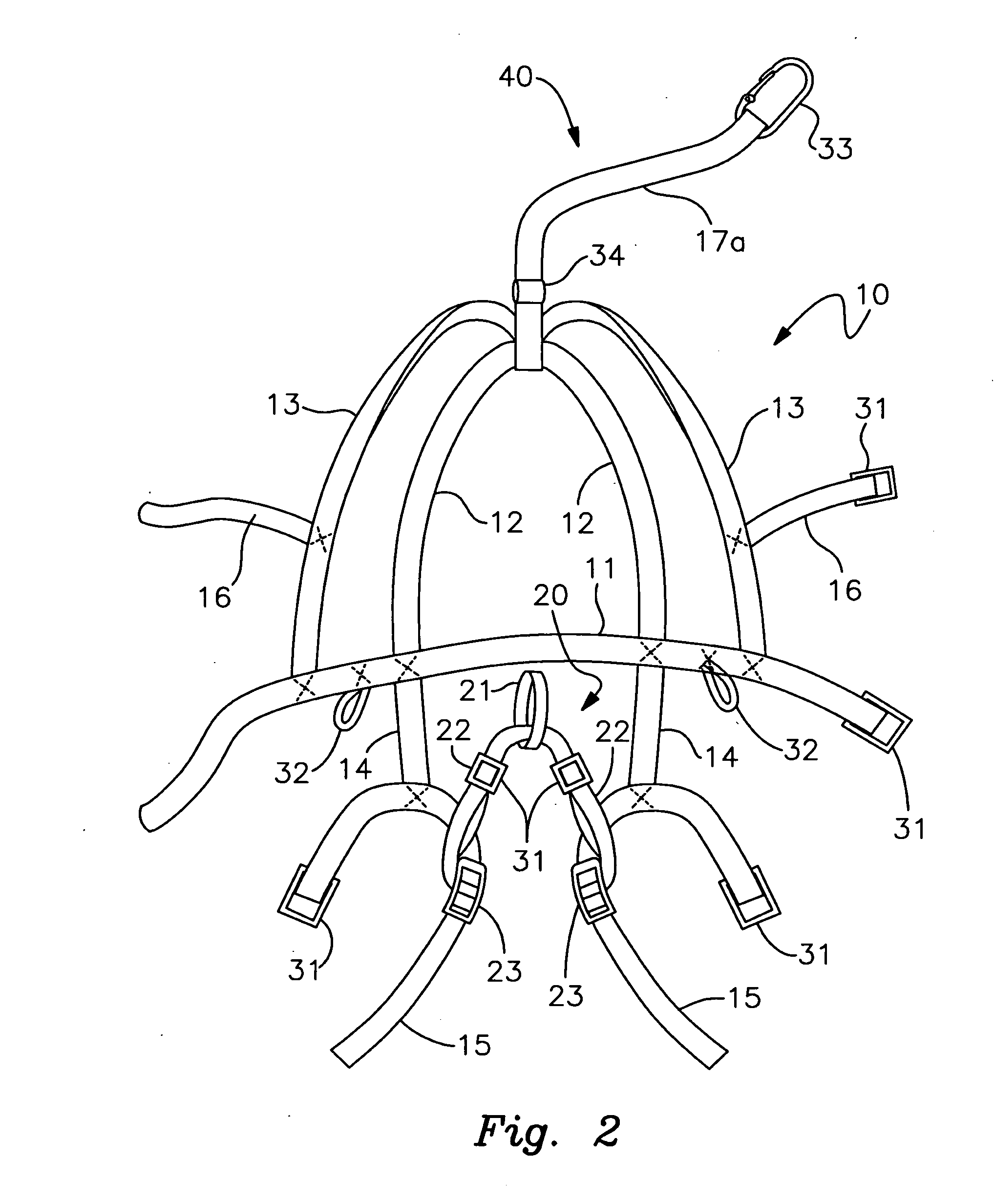Safety harness
a safety harness and harness technology, applied in the field of safety harnesses, can solve the problems of not being able to adjust the distance from the waist strap, not being able to provide self-rescue and suspension trauma relief, and not being able to meet the design best, so as to facilitate the movement of the legs
- Summary
- Abstract
- Description
- Claims
- Application Information
AI Technical Summary
Benefits of technology
Problems solved by technology
Method used
Image
Examples
Embodiment Construction
[0021]With reference to the drawings, the invention will now be described in detail with regard for the best mode and the preferred embodiment. In general, the invention is an improved safety harness and safety harness system to restrain the wearer in the event of a fall from an elevated position, such as a tree, building under construction, or the like, the safety harness limiting the fall to a relatively short distance, wherein the device provides mechanisms for front or rear attachment to safety lines and allows the wearer to switch between front and rear attachments without being unattached during the transfer. The invention is structured to minimize or eliminate the occurrence of suspension trauma, i.e., blood pooling in the legs as a result of being suspended in a vertical orientation for excessive periods of time in a manner whereby circulation of blood in the legs is restricted. The invention provides a methodology to assume a horizontal posture to await rescue, and more imp...
PUM
 Login to View More
Login to View More Abstract
Description
Claims
Application Information
 Login to View More
Login to View More - R&D
- Intellectual Property
- Life Sciences
- Materials
- Tech Scout
- Unparalleled Data Quality
- Higher Quality Content
- 60% Fewer Hallucinations
Browse by: Latest US Patents, China's latest patents, Technical Efficacy Thesaurus, Application Domain, Technology Topic, Popular Technical Reports.
© 2025 PatSnap. All rights reserved.Legal|Privacy policy|Modern Slavery Act Transparency Statement|Sitemap|About US| Contact US: help@patsnap.com



